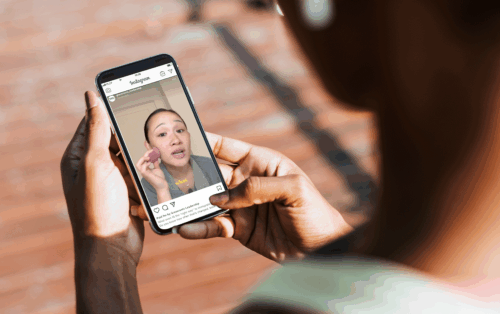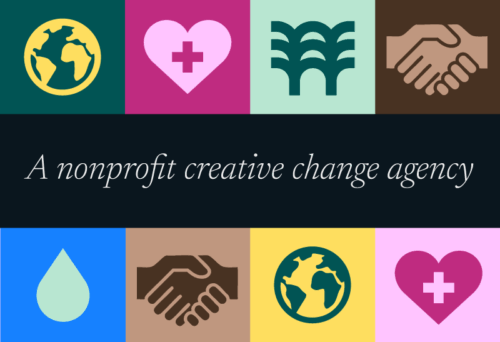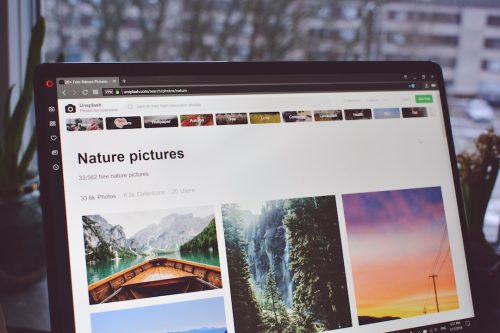
Making sure you have the right license
Nothing is more essential than captivating your audience’s attention – and photos are an easy way to make this happen!
Images are fundamental. Our work wouldn’t have as strong an impact without them. They convey visual information and reinforce the information we read and hear. From online articles to social media posts, photos draw our attention in and invite viewers to interact, learn and participate in calls-to-action.
While sourcing free-to-use images have become commonplace on platforms like Unsplash, it’s still important to incorporate and use candid images that offer an alternative to “stock-esque” photos. Creative Commons is a great resource for accessing such images but it’s important to protect your organization and yourself and make sure you’re adhering to the various licenses that exist.
Simple tips in navigating the tricky world of sourcing images:
Tip 1
Begin with this rule-of-thumb: when possible, work directly with the photographer.
There is nothing safer than having written permission from the source itself (aka the photographer!) and it’s the best way to ensure you won’t run into any issues later on.
Tip 2
Often times we create presentations, proposals or social media visuals and pull images from all over the internet and share them out to clients, colleagues, funders, etc. where it’s easy to lose track of them. To safeguard your organization and yourself, avoid the following:
- Screenshotting images that can’t be directly saved from a file or the internet – even if it’s for a simple PowerPoint presentation!
- Dragging or saving images from blogs, news media and the internet in general (you need permission!).
These are simple know-hows that can protect you from online licensing police such as Pixsy and PicRights. Screenshotting images and pulling them from blogs or news media sources can result in negative consequences for your organization. Images that are not free to use can almost always be claimed by the photographer or the company representing the image. This can result in hefty fines if the correct permissions, licenses or attributions aren’t applied.
Tip 3
Be diligent when pulling images from Creative Commons or any free online resources. 
- Always screenshot the license and the image especially from Flickr Creative Commons since the owner can pull images or change the license at any given moment.
- The license for all images can be found on the lower right corner – make a note of what it says!
- Be aware of the various licenses found on Creative Commons.
Tip 4
Always attribute photos, no matter what – even for social media visuals.
Correct Attribution: “Creative Commons 10th Birthday Celebration San Francisco” by tvol is licensed under CC BY 2.0
Incorrect Attribution: Photo: Creative Commons.
You must include the title, author, and source in your attributions.
Tip 5
Use trustworthy sources such as Unsplash, Flickr Creative Commons and Getty. Stop googling images and dragging them to your desktop!
Tip 6
When possible, scope projects with a photography budget in mind – especially if your project includes a visual component and you foresee needing to use or source images. Revisit Tip 1.
Tip 7
Keep track of how and where you sourced images.
Example: Create a spreadsheet with the source and attribution information – especially if you’re putting together a social media visual or a website with little to no budget.
In the event that you receive a letter from an unknown licensing firm requesting money, here are a few tips to consider before taking action.
- Ask them to prove that they represent the photographer.
- Request that they inform you how they arrived at their figure. From some documented sources, when people push back even a little, they bring down the fee in hopes of getting something.
- Reply to them saying that you are seeking legal advice before taking any action.
- Never acknowledge any infringement on your part until you are advised to do so by a lawyer in the event this is a fraudulent request.
- Search for the photo on Flickr to verify that it has the correct license (that’s why it’s important to keep track!).
- Make sure they have proof of the image and license in question. Licensing firms will often times index the photographer’s work in question on Flickr so it appears like their real account when in fact, it’s fake. See if you can determine where you originally found the image and if there is a creative commons license associated with it. If yes, you should be OK. Screenshot the image with the associated license and email it back to the firm.
- Check to see if the photo in question is available on more than one photo library. If yes, they can’t do much to pursue legal action because they can’t prove where the photo originally came from.
Download our tip-sheet here.
Originally published August 28, 2019.
Image by Panos Sakalakis, sourced from Unsplash.
More Insights and Resources


Rooted in who we are: Check out our new look and website







